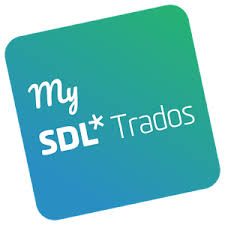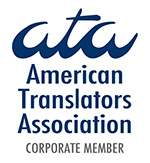Whether you are just starting out or looking to move to the next level, here are five tried-and-tested tools that streamline your translation business, whether you’re a freelancer or an LSP.
For more up-to-date recommendations on tools that will help you in your career as a translator, or help you learn foreign languages, check out our Translator Resources page!
.
.
.

.
Love it or hate it, most professional translators have Trados. At Meridian Linguistics, about one third of the jobs we handle require Trados. This is actually a low percentage when compared to other agencies, because in our case, we work with many hard-to-find languages for which Trados isn’t an option. Many agencies require it 100% of the time. Yes, clients will expect a discount on fuzzy matches, but you yourself will also notice an increase in efficiency over time as you build your translation memories and termbases, saving you time when a document comes around that looks very familiar to documents you’ve translated in the past (and *shhh* but you won’t always have to offer fuzzy discounts, especially when the client doesn’t specifically ask for a CAT tool to be used!) The future of translation will rely on tools like Trados to streamline the more thankless tasks of translation (formatting, repetitions) so that translators can spend more of their time researching terms and coming up with thoughtful solutions. You’ll want to be ready when it becomes the norm.
[UPDATE:] As Meridian Linguistics transitions to the free online cloud-based tool SmartCat, many jobs that used to require Trados can now be handled through the SmartCat platform, which is able to process sdlxliffs and project files. If you aren’t on SmartCat yet, we highly recommend it! It can handle several file types, and did we mention it is free?
.
.

.
Meridian Linguistics will never do this, but SOME clients do have that pesky habit of asking YOU to give them a word count and a quote when there’s a PDF involved. ABBYY works with several languages and turns PDF’s into Word documents so that you can easily count the words.
Optical Character Recognition can also provide you with editable templates for complex formatting, but proceed with caution. Cleaning up OCR can end up more of a nightmare than creating your own formatting from scratch (and by the way, there are thousands of freelancers available on Upwork and Fiverr who will create templates for you for $10 or less).
.
.

.
.Depending on your needs, you may be able to get away with cheaper accounting software such as Freshbooks, or 17hats. However, Xero is our pick for its ability to manage several currencies and automatically import bank statements. Xero automates several accounting tasks that otherwise eat into your translating time, so we consider it to be a worthwhile investment.
.
.

.
Finally, a free tool! The Speedtest app is free for download on your phone, and lets you test wifi strength before you order that latte or register at that co-working space. If you are a full-time freelance translator, chances are you take full advantage of your location-independence to work while you travel, and in that case you’ll need to be able to find strong wifi wherever you go.
.
.

.
Ever get a zip file from a client with 200 files in it? And they want a quote ASAP? Practicount lets you do word counts on large batches of files. Premium versions even let you exclude highlighted text or strikethroughs. Well worth the download.
.
.
We hope these tools help you translate smarter and faster. Check out more translator tools in our Translator Resources section, and if you have any suggestions for other tools, please leave them in the comments!
This post includes affiliate links, which allow us to secure great deals for our linguists.












Leave A Comment